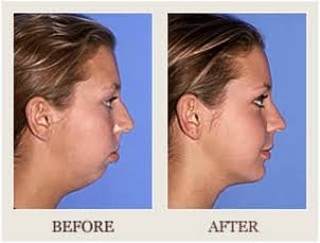Here’s Why You Should Go to a SMART Certified Dentist in Anchorage
If you’ve opened this blog, you are probably wondering what “SMART certified dentist” means.
Our very own Dr. Mandanas is a SMART certified dentist in Anchorage. We are very excited to share how this certification makes us different from other dentists and what makes it so beneficial to our patients!
You’ll learn why going to a SMART certified dentist matters. We hope you get a lot out of this blog, especially the information you need to make a smart choice about your dental provider (wink, wink). Enjoy!
What Does “SMART Certified Dentist” Mean?
The acronym SMART stands for the Smart Mercury Amalgam Removal Technique. The SMART certification is something administered by the International Academy of Oral Medicine & Toxicology (IAOMT), a global network of dentists, health professionals, and scientists who research the biocompatibility of dental products.
Biocompatibility (our definition) – Compatibility with the mouth and body, typically used in reference to dental treatments and devices, meaning that they do not pose a risk to the health of the mouth and body.
You can learn more about biocompatibility in our blog, What Is Biocompatible Dentistry? Philosophy and Practice.
The IAOMT is especially interested in the risks associated with mercury amalgam fillings. The Smart Mercury Amalgam Removal Technique (SMART) was created to protect the mouth and body against those risks.
Why Does Going to a SMART Certified Dentist in Anchorage Matter?
So what are the risks of mercury amalgam fillings and why does going to a SMART certified dentist matter?
The risks of mercury amalgam are not agreed on by the scientific community. Mercury amalgam fillings release low levels of mercury in the form of vapors over their lifetime. The levels of mercury vapors released by amalgam fillings are not high enough to pose a risk to your health. Both the American Dental Association (ADA) and the U.S. Food and Drug Administration (FDA) have marked amalgam fillings safe for use in dental practice. However, studies have shown changes in the health complaints of patients who have had their amalgam fillings removed, though the exact reasons for these results have yet to be determined.
There are many reasons why you might want to get your mercury amalgam fillings removed besides concern over mercury vapors. Mercury amalgam fillings have a lifespan of 10-15 years, which means they need to be replaced if they are getting old or worn. They can also cause teeth to chip and crack. You can learn more in our blog, 5 Reasons Why You Should Get Your Amalgam Fillings Replaced.
Because health complaints have been correlated with the removal of mercury amalgam fillings specifically, when you need to get your fillings removed, you should go to a SMART certified dentist. A SMART certified dentist is trained to protect you from the risks of mercury amalgam and they will replace your fillings with composite, a material that is known to be biocompatible, or, safe for your mouth and body.
What Is the Smart Mercury Amalgam Removal Technique?
The Smart Mercury Amalgam Removal Technique is a protocol that SMART certified dentists use to remove mercury amalgam fillings as safely as possible. We have broken it down into 10 easy-to-understand steps in our blog, What Is the Safe Mercury Amalgam Removal Technique? Get SMART About Your Fillings. The protocol includes water separation and air filtration devices, mercury absorbent cleaning materials, protective coverings, and more.
Do you need fillings or are you interested in getting your mercury amalgam fillings removed? We would love to get you in to see our SMART certified dentist here in Anchorage, Dr. Mandanas. She can discuss your treatment options with you and talk more about the risks of mercury amalgam. Schedule an appointment today!




